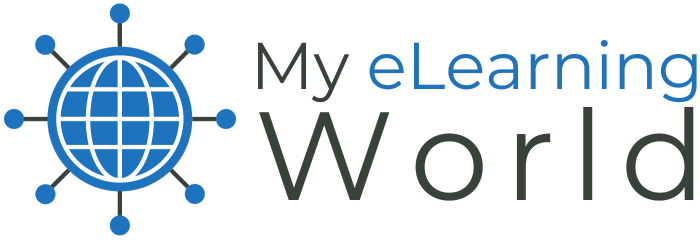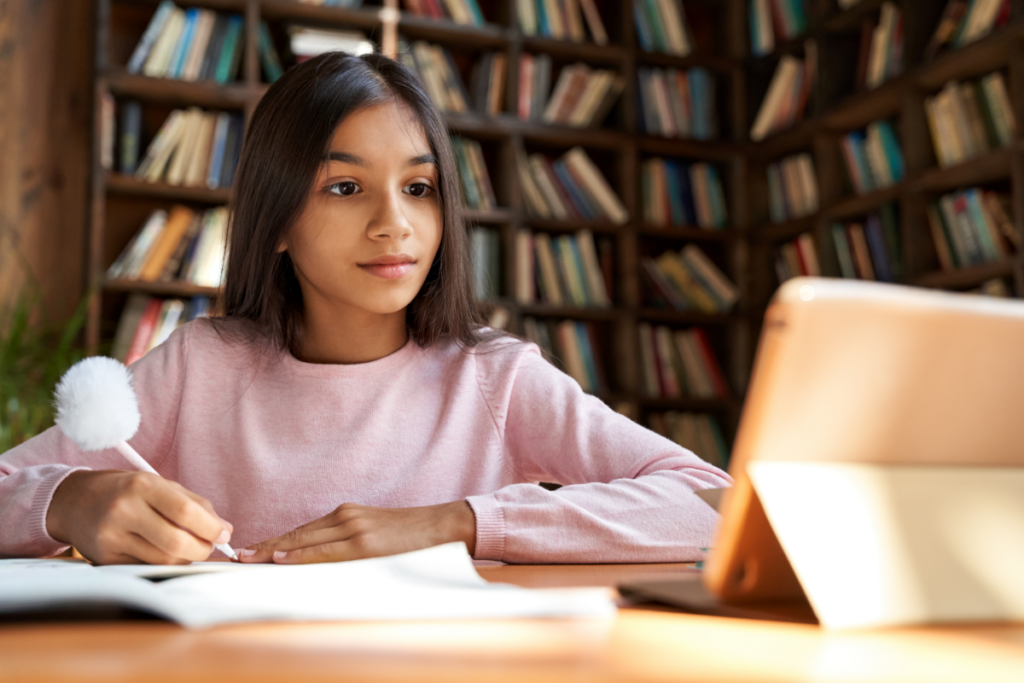As an instructional designer, I’ve had the privilege of witnessing the evolution of education over the past decade. Nothing could have prepared me for the seismic shift that the global pandemic brought to the world of learning. Undeniably, the COVID-19 crisis left an indelible mark on our educational landscape, resulting in significant learning losses for students across the globe.
It’s a challenge that compelled me and many fellow educators and designers to explore innovative solutions. In this article, I’d like to share what I have learned about how eLearning can be used to address these post-pandemic learning losses.
The Learning Loss Dilemma: A Daunting Reality
Before exploring eLearning solutions, let’s acknowledge the elephant in the room – the daunting problem of learning loss. The pandemic disrupted traditional classroom education and left students grappling with gaps in their knowledge and skills.
While we all did our best to adapt to remote learning, there’s no denying that it couldn’t fully replace a classroom’s in-person, interactive experience. Being in a classroom with a teacher helps mitigate some of the inequities students face, such as a lack of parental support, inadequate access to technology, and other factors. Many children fell significantly behind when schools closed and moved to virtual learning.
In fact, a study by Harvard University found that “the average U.S. public school student in grades 3-8 lost the equivalent of a half year of learning in math and a quarter of a year in reading.”
Bridging Learning Gaps with eLearning
Amid the challenges of school closures and shifts to remote learning, eLearning emerged as a powerful lifeline. As a learning designer specializing in instructional technology, the pandemic renewed my sense of purpose. It was the perfect time to explore the full potential of eLearning to bridge the gaps and help students regain lost ground.
Here are some ways I’ve seen eLearning make a difference:
Personalized Learning
In education, we know that one size does not fit all. Each student has unique strengths, weaknesses, and learning preferences. This is where the magic of personalized eLearning comes into play. I’ve seen first-hand how eLearning excels at tracking and guiding individual growth, allowing each student to thrive at their own pace and in their own way.
We know that tracking grades is insufficient to measure learning. eLearning platforms have the remarkable capability to measure and adapt to a student’s level of understanding. This adaptive learning approach ensures that all students receive the support they need to succeed.
For example, if a student struggles with foundational math concepts during remote learning, the eLearning system can identify these areas of weakness and offer tailored content. It might start with fundamental math exercises before gradually progressing to more advanced topics. This adaptability becomes like a virtual tutor, meeting students exactly where they are and guiding them towards mastery.
Flexibility and Accessibility: Anywhere, Anytime Learning
One of the defining strengths of eLearning is its inherent flexibility and accessibility. I’ve witnessed how these attributes have been instrumental in addressing the challenges of post-pandemic learning loss.
With eLearning, the boundaries of traditional classrooms no longer apply. Students can access educational materials and resources from the comfort of their homes, libraries, or even on their smartphones. This “anywhere, anytime” approach means fixed schedules or physical locations do not limit students. The learning materials are just a click away, whether it’s early in the morning, late at night, or during a weekend getaway.
The ability to learn at your own pace is a game-changer. For students who may have fallen behind during the pandemic, eLearning offers a lifeline. They can take the time they need to grasp challenging concepts, revisiting content as often as necessary until they feel confident. Self-paced learning minimizes the stress and pressure often associated with traditional classrooms, where the teacher sets the pace. This allows students to reclaim a sense of control over their own learning journey.
Targeted Remediation: Building Strong Foundations
From my perspective as a learning designer, one of the most compelling aspects of eLearning is its ability to offer precise, targeted remediation for learning gaps. This approach plays a pivotal role in helping students build a solid educational foundation, especially in the context of post-pandemic learning loss. Through well-crafted eLearning programs and courses, students can focus on the areas where they need the most help. This targeted approach helps them build a strong foundation for future learning.
Of course, the first step in targeted remediation is identifying specific areas where students struggle or have gaps in their understanding. Through assessments, quizzes, or AI-powered algorithms, eLearning platforms can pinpoint these areas with a high degree of accuracy. I’ve witnessed the transformative power of this diagnostic capability first-hand, as we can precisely determine where students need the most help.
eLearning tools track student progress toward mastery, which helps teachers create personalized learning plans. These plans are tailored to the individual needs of each student. If, for example, a student struggled with algebra during the pandemic, the eLearning system can design a learning path emphasizing algebraic concepts. These paths may include interactive lessons, exercises, and resources dedicated to building a solid foundation in algebra.
Blended Learning: Uniting the Best of Both Worlds
Blended learning is a strategy I hold close to my heart and your secret weapon for correcting post-pandemic learning loss. It’s a dynamic approach that combines the advantages of traditional classroom instruction with the strengths of eLearning.
The pandemic showed educators and students the intrinsic value of in-person interaction. It fosters connections, allows for real-time feedback, and nurtures the social and emotional aspects of learning. Students thrive on the energy of the classroom, and teachers play a pivotal role in guiding and inspiring them. Throughout the school closures of the pandemic, we saw how essential this in-person component is for education.
On the flip side, eLearning resources bring a world of flexibility and interactivity to the educational landscape. These resources are accessible 24/7, enabling students to revisit content, seek additional support, or explore topics independently. These tools leverage multimedia elements, gamification, and adaptive content, making learning engaging and effective.
Blended learning takes the best of these two worlds and unites them into a synergistic approach. It acknowledges that education doesn’t have to be an either-or scenario; it can be a “both-and.” This approach becomes invaluable in a post-pandemic world where students may have experienced disruptions and learning gaps.
This strategy creates a balanced approach to education. It recognizes that students can have the best of both worlds without sacrificing the benefits of in-person interaction or the convenience of eLearning. This balance helps students regain their lost confidence, rebuild their knowledge base, and rekindle their enthusiasm for learning.
Gamification and Engagement: Reviving Learning Enthusiasm
In recent years, one undeniable truth has surfaced: we cannot fully address pandemic learning losses without an increase in instructional time. So the question is not whether we need more learning time but how we can provide it, especially as schools grapple with budget constraints and concerns about further burdening students, parents, and teachers. This is where eLearning excels, offering an ingenious solution through gamification and engagement.
Gamification in eLearning is based on the understanding that engagement is the linchpin of effective learning. Gamified learning gives students an immersive and enjoyable learning experience, transforming the learning process into a thrilling, interactive adventure.
These gaming elements include interactive quizzes, competitive challenges, story-based scenarios, and collaborative problem-solving. In a gamified environment, students actively participate in their learning, making choices and exploring content. The competitive and cooperative aspects enhance peer learning, communication skills, and critical thinking.
In my experience, gamification strikes the perfect balance between learning and fun, making it a remarkable tool for addressing learning losses. With eLearning, students no longer see learning as a chore but as a rewarding adventure. This shift in perspective is crucial, especially for those who may have developed a negative perception of learning during recent years.
Data-Driven Decision-Making: Insights to Guide the Learning Journey
Accurately measuring student mastery requires an innovative approach. In the world of eLearning, progress is not a nebulous concept. It’s meticulously tracked, and the collected data play a significant role in guiding students through the learning journey. With eLearning tools, learning designers and educators can closely monitor students’ progress along their targeted learning path.
With the insights provided by eLearning, educators can accurately monitor student progress and make timely interventions for those falling behind. This data-driven approach ensures that students make consistent strides and enables timely interventions when facing hurdles.
Remember, collecting student data isn’t just about identifying weaknesses. It’s about nurturing each student’s potential by recognizing that every student is unique and can reach their full potential with the right support. I take great pride in being part of a process that ensures no student is left behind and that everyone’s educational journey is guided with care and precision.
Looking Ahead
Addressing post-pandemic learning losses is a collective effort involving educators, parents, and thoughtful learning design. The resilience and adaptability of students inspire us to create eLearning experiences that offer hope in times of uncertainty.
When thoughtfully designed and implemented, eLearning can be a beacon of light in the journey of post-pandemic recovery. By leveraging eLearning technology in a thoughtful and holistic manner, teachers can help students bridge the learning gaps created by the pandemic and facilitate a more effective recovery process.
I’ve seen students who initially felt overwhelmed and disheartened regain their confidence as they witness their steady progress. It’s gratifying to be part of their educational journey, knowing that their strong foundation will serve them well in their current studies and future academic endeavors.
- LMS vs. CMS: What are the Differences? - 08/05/2024
- 5 Ways Instructional Designers Can Use Video Effectively - 03/08/2024
- Teachable vs. LearnWorlds: A Comprehensive Comparison - 03/04/2024

